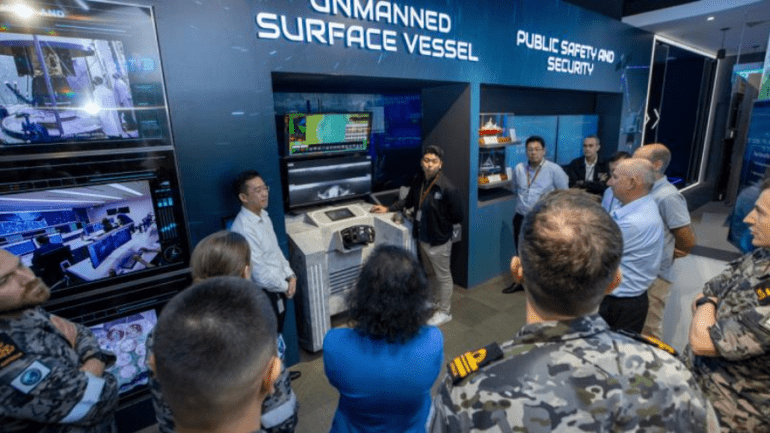TL;DR:
- Royal Australian Navy and Singapore Navy collaborate on autonomous maritime systems during Indo-Pacific Endeavour.
- Discussions centered on robotics, autonomous systems, and AI (RAS-AI) technology.
- Focus on uncrewed vessels and RAS-AI tech for maritime transformation in the next decade.
- Singapore’s advanced unmanned surface vehicle tech was deemed pivotal for partnership.
- Both nations share interests in enhancing uncrewed underwater vehicle capabilities.
- Collaboration aims to streamline operational efficiency, cost benefits, and technological advancement.
- Singapore’s expertise aids Australia in navigating its naval technology implementation timeline.
Main AI News:
The Royal Australian Navy and representatives from the Defence Science Technology Group convened with counterparts from the Republic of Singapore Navy, embarking on a strategic dialogue concerning the progression and metamorphosis of autonomous maritime systems. The recent Indo-Pacific Endeavour provided the backdrop for these deliberations in Singapore, which revolved around a mutual fascination with robotics, self-regulating systems, and the realm of artificial intelligence (RAS-AI). The focus was on forging a collaborative pathway for both nations to harness this transformative technology.
Commander of the Maritime Deployable Robotic Autonomous Systems and Experimentation Unit (MDREU), Lieutenant Commander Charlie Kenney, underscored the significance of Singapore’s cutting-edge unmanned surface vehicle technology, asserting its pivotal role in bolstering Australia’s naval prowess. Lt. Cmdr. Kenney prophesied the impending tidal wave of robotic technologies set to reshape the maritime sector within the next decade. This transformation will usher in a new era of unmanned vessels and RAS-AI innovations, forever altering the dynamics both above and beneath the water’s surface. Given Singapore’s pioneering strides in this domain, a collaboration between the two nations emerges as a strategic imperative.
Parallels between Australia and Singapore as vital maritime conduits underpin the cooperative approach toward enhancing uncrewed underwater vehicle capabilities and unmanned surface vessels. This symbiotic partnership finds its footing in the shared objectives of addressing challenges, harnessing opportunities, and streamlining operational excellence across their respective naval forces. Neil Tavener, the leading authority on RAS/vehicle systems integration within the Defence Science Technology Group, outlined a more expansive vista for this collaboration. He delineated how autonomous systems would serve as extensions of the existing capabilities, amplifying human-controlled platforms and transcending barriers that inhibit human exploration.
The trajectory of this collaborative journey promises not only heightened safety and operational efficiency but also an unprecedented expansion of naval capabilities. The rapid evolution of Singapore’s unmanned platforms offers a pertinent lesson for Australia, which is strategically positioned to glean insights from Singapore’s rich expertise and avant-garde innovations. The exchange of experiences and insights is poised to enhance developmental trajectories for both nations, united by shared values and mutual goals.
Conclusion:
This collaboration between the Royal Australian Navy and the Singapore Navy signifies a significant stride toward the integration of advanced autonomous maritime systems. The emphasis on robotics, autonomous technology, and AI underscores the commitment of both nations to redefine maritime operations. The exchange of insights and expertise positions them at the forefront of maritime innovation, paving the way for streamlined operations, improved capabilities, and cost-effective solutions. As these advancements continue, the market can expect a surge in demand for autonomous maritime technologies, reshaping the landscape and fostering a new era of naval efficiency and effectiveness.

